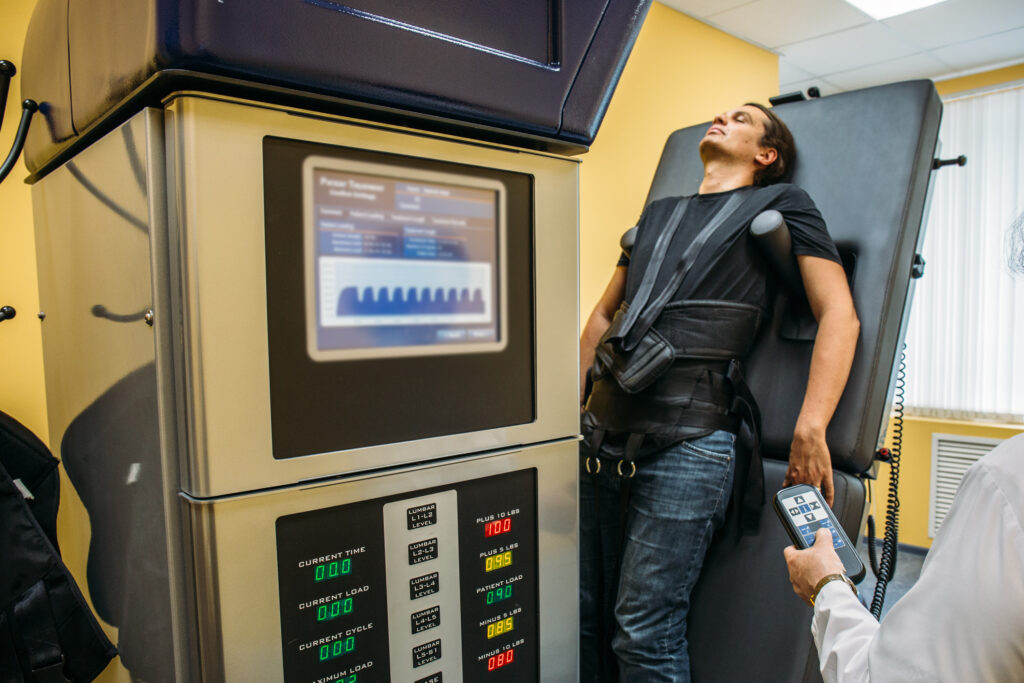If you want to enhance your flexibility today, it's crucial to start with clear goals that target specific areas of your body. You might think that simply stretching is enough, but there are effective strategies that can make a significant difference. By incorporating dynamic warm-ups and focusing on your breathing, you'll set the stage for better results. And that's just the beginning. There are more secrets waiting to be uncovered that can transform your routine and elevate your flexibility game.
Set Clear Flexibility Goals
To improve your flexibility, you need to set clear goals. This means determining what you want to achieve and breaking it down into manageable steps. Think about specific areas in your body where you'd like to gain flexibility, whether it's your hamstrings, hips, or shoulders. By defining these areas, you create a focused plan that guides your efforts.
Next, make your goals measurable. Instead of saying, "I want to be more flexible," try, "I want to touch my toes within three months." This gives you a target to work towards and lets you track your progress. You can even document your flexibility milestones, such as how far you can reach in a seated forward bend or how deep you can go into a squat.
Timeframes are essential, too. Set realistic deadlines for achieving your goals. Flexibility improvement takes time, so be patient with yourself. A three-month plan can help you stay motivated without feeling overwhelmed.
It's also helpful to break down your goals into weekly or monthly objectives. For instance, if your ultimate goal is to do a split, start by focusing on hip openers or other preparatory stretches each week. This approach allows you to celebrate small victories along the way.
Lastly, stay flexible with your goals. As you progress, you may find that your initial targets need adjusting. Be open to change, and keep your focus on continuous improvement. With clear goals, you'll stay motivated and on track to enhance your flexibility effectively.
Incorporate Daily Stretching
Incorporating daily stretching into your routine can considerably boost your flexibility.
Start your day with a morning stretch routine to wake up your muscles, and wind down in the evening with relaxation stretches to release tension.
Morning Stretch Routine
Starting your day with a morning stretch routine sets a positive tone for both your body and mind. You'll find that just a few minutes of stretching can enhance your flexibility and boost your energy levels.
Begin by incorporating a few simple stretches that target major muscle groups. Start with a gentle neck roll to release tension, followed by shoulder shrugs to loosen up tight muscles. Next, try a standing side stretch to open up your sides and improve your reach.
Don't forget the hamstrings; a seated forward bend can help lengthen those muscles and increase your overall flexibility. Make sure to hold each stretch for about 15-30 seconds, breathing deeply to enhance relaxation.
As you progress, you might want to add dynamic stretches like arm circles or leg swings, which can further wake up your body. Consistency is key, so aim to make this morning routine a daily habit.
With time, you'll notice significant improvements in your flexibility and a more energized start to your day. So, roll out your mat, and get ready to embrace the benefits of a morning stretch routine!
Evening Relaxation Stretches
After energizing your morning with stretches, winding down in the evening with relaxation stretches can further enhance your flexibility and promote a restful night. Incorporating a few key stretches into your evening routine helps release tension built up throughout the day.
Start with a gentle forward bend. Stand tall, then reach for your toes, letting your head hang heavy. Hold this position for 20-30 seconds to feel the stretch in your hamstrings and lower back.
Next, sit down and extend one leg while the other foot rests against your inner thigh. Lean forward towards the extended leg, and hold for another 20-30 seconds. This targets your hamstrings and helps with hip flexibility.
Add a seated butterfly stretch by bringing the soles of your feet together and letting your knees drop toward the floor. Hold this stretch and breathe deeply, allowing your body to relax.
Finally, finish with a lying spinal twist to release tension in your back. These stretches not only improve flexibility but also signal your body to unwind, making it easier to shift into sleep.
Incorporate these into your evening routine and reap the benefits of increased flexibility and relaxation.
Use Dynamic Warm-Ups
Dynamic warm-ups are essential for enhancing your flexibility and preparing your body for movement.
By incorporating effective exercises and timing them right, you can maximize your performance and reduce the risk of injury.
Let's explore the benefits and best practices for dynamic warm-ups that can elevate your routine.
Benefits of Dynamic Warm-Ups
Incorporating dynamic warm-ups into your routine can greatly enhance your flexibility and overall performance. These warm-ups involve active movements that help prepare your muscles and joints for the activity ahead. By engaging in dynamic stretches, you increase blood flow to your muscles, making them more pliable and ready for action.
Dynamic warm-ups also improve your range of motion. As you perform movements that mimic the exercises you're about to do, you train your body to move more freely and efficiently. This can lead to better performance in your workouts, sports, or daily activities. You'll notice increased agility and coordination, which can considerably reduce the risk of injuries.
Additionally, dynamic warm-ups help activate your central nervous system. This increased neural activation not only boosts your physical readiness but also enhances your mental focus, allowing you to concentrate on your performance.
Lastly, incorporating these warm-ups into your routine can make your workouts more enjoyable. You'll feel energized and ready to tackle any challenge. So, don't skip this essential step—make dynamic warm-ups a staple in your fitness regimen!
Effective Warm-Up Exercises
A variety of effective warm-up exercises can set the stage for a successful workout. Dynamic warm-ups, in particular, are your best bet for increasing flexibility and prepping your muscles for activity.
Start with leg swings; while holding onto a wall or sturdy surface, swing one leg forward and backward, gradually increasing the range of motion. This simple move loosens up the hips and legs.
Next, try walking lunges. Step forward with one leg and lower your hips until both knees are at 90-degree angles. This exercise not only stretches your groin and hip flexors but also engages your core. You can add a torso twist at the bottom of each lunge to enhance spinal mobility.
Don't forget about arm circles! Extend your arms out to the sides and make small circles, gradually increasing their size. This warms up your shoulders, preparing them for upper body movements.
Finally, finish with high knees, jogging in place while driving your knees toward your chest. This not only raises your heart rate but also engages your hip flexors.
Incorporate these dynamic warm-ups into your routine, and you'll feel more limber and ready to tackle any workout ahead.
Timing and Frequency Tips
To maximize the benefits of your dynamic warm-ups, timing and frequency play a significant role. When you incorporate these warm-ups into your routine, aim to perform them right before your workouts or physical activities. This timing helps increase blood flow to your muscles and prepares your body for movement, reducing the risk of injury.
Frequency is just as important. Try to include dynamic warm-ups in every workout session, whether it's strength training, running, or yoga. Doing this consistently will enhance your flexibility over time. A good rule of thumb is to spend at least 10-15 minutes on warm-ups, focusing on major muscle groups you'll be using.
Listen to your body; if something feels tight or stiff, spend a little extra time on that area. You can also mix in dynamic stretches throughout the week, even on rest days. This helps maintain your flexibility and keeps your muscles engaged.
Practice Yoga Regularly
Practicing yoga regularly can transform your flexibility and overall well-being. By incorporating various poses and stretches into your routine, you'll gradually enhance your range of motion and reduce stiffness.
Yoga isn't just about flexibility; it also builds strength and balance, which are essential components for improving your overall physical health.
To start, dedicate a specific time each week to practice yoga. Whether it's a few sessions at home or classes at a local studio, consistency is key. Choose a style that resonates with you, whether it's Hatha, Vinyasa, or Yin. Each type offers unique benefits, so explore different options until you find what works best for you.
As you progress, pay attention to your body. Notice how your muscles respond to various poses and adjust your practice accordingly. Use props like blocks or straps to assist you in achieving proper alignment and depth in your stretches.
Don't rush through poses; hold them for several breaths to fully experience their benefits. You might also consider mixing in a range of poses targeting different muscle groups. Incorporating poses like Downward Dog, Forward Fold, and Pigeon can help deepen your stretches and enhance flexibility.
Focus on Breathing Techniques
How can focusing on your breathing elevate your flexibility practice? Breathing techniques play an essential role in enhancing your flexibility. When you direct your attention to your breath, you not only calm your mind but also help your body relax, making it easier to stretch and reach new depths in your poses.
Here are four key breathing techniques to incorporate into your routine:
- Diaphragmatic Breathing: Breathe deeply into your belly rather than your chest. This method increases oxygen flow, allowing your muscles to relax and stretch more effectively.
- Slow, Controlled Breaths: Take your time with each inhale and exhale. Slow breaths help to ease tension and promote a deeper connection to your body, enhancing your overall flexibility.
- Match Your Breath to Movement: Coordinate your breath with your movements. Inhale as you prepare to stretch and exhale as you deepen the stretch. This rhythm helps maintain focus and stability.
- Practice Visualization: As you breathe, visualize your muscles lengthening and releasing tension. This mental imagery can create a stronger mind-body connection, amplifying your flexibility gains.
Stay Hydrated
Staying hydrated is essential for improving your flexibility.
When you're well-hydrated, your muscles can perform better and recover faster.
Let's explore the importance of water intake and some tips on when to hydrate for best results.
Importance of Water Intake
Hydration plays an essential role in enhancing your flexibility and overall physical performance. When you're well-hydrated, your muscles function better, and your joints stay lubricated, allowing for smoother movements.
If you've been neglecting your water intake, it's time to make a change. Here are four reasons why staying hydrated is imperative for your flexibility:
- Muscle Function: Proper hydration helps maintain electrolyte balance, which is essential for muscle contraction and relaxation.
- Joint Health: Water acts as a lubricant for your joints, reducing friction and minimizing the risk of injury during stretches and movements.
- Toxin Removal: Staying hydrated helps flush out toxins, which can lead to muscle soreness and stiffness, hindering your flexibility efforts.
- Overall Performance: Good hydration enhances your endurance and energy levels, making it easier to engage in flexibility exercises consistently.
Hydration Timing Tips
Maintaining ideal hydration isn't just about drinking water when you're thirsty; it's also about timing your intake strategically throughout the day. To optimize your flexibility and overall performance, aim to drink water consistently, rather than chugging large amounts at once.
Start your day with a glass of water to kickstart your hydration levels after a night's rest. Throughout the day, sip water regularly, especially before, during, and after workouts. This not only keeps your muscles hydrated but also helps in maintaining elasticity, which is vital for flexibility.
If you're planning to stretch or engage in flexibility exercises, hydrate about 30 minutes beforehand. Don't forget to listen to your body! If you're feeling fatigued or your mouth is dry, it's a sign you need to drink more.
After intense activities, replenish lost fluids promptly to aid recovery. Also, consider your environment; hot or humid conditions may require additional hydration.
Utilize Foam Rolling
To enhance your flexibility, incorporating foam rolling into your routine can make a significant difference.
Foam rolling, also known as self-myofascial release, helps relieve muscle tightness and improve blood flow, which are key components for increasing flexibility.
Here's how you can effectively utilize foam rolling:
- Target Major Muscle Groups: Focus on areas that are typically tight, like your quads, hamstrings, calves, and back. Rolling these areas can release tension and increase range of motion.
- Use Proper Technique: When rolling, apply your body weight onto the foam roller and move slowly, pausing on any tender spots for 20-30 seconds. This allows the fascia surrounding your muscles to relax.
- Incorporate It into Your Warm-Up: Spend 5-10 minutes foam rolling before you stretch or work out. This preps your muscles and improves your flexibility by increasing blood flow.
- Cool Down with Foam Rolling: After your workout, use foam rolling to help your muscles recover. It assists in reducing soreness and promotes faster recovery, making your next flexibility session more effective.
Add Resistance Training
Adding resistance training to your flexibility routine can greatly boost your overall performance. When you incorporate weights or resistance bands, you're not just strengthening your muscles; you're also enhancing your flexibility. This combination helps your muscles respond better to stretches, allowing for deeper and more effective flexibility training.
One of the key benefits of resistance training is that it engages your muscles in a way that promotes balance and stability. By working on muscle groups that often oppose one another, you can reduce tightness and improve your range of motion. For instance, if you're focusing on your hamstrings, don't forget to strengthen your quadriceps as well. This balanced approach guarantees that both sides of a joint are strong and flexible, which reduces the risk of injury.
Moreover, resistance training can improve your posture. Better posture contributes to increased flexibility because it allows your muscles to work more efficiently. As you strengthen your core and back, you'll find that your overall alignment improves, making it easier to stretch and reach your flexibility goals.
Consider incorporating exercises like lunges, squats, or push-ups with added resistance. These movements not only build strength but also engage your muscles in a way that promotes flexibility.
Be Consistent
Consistency is key when it comes to improving flexibility, as regular practice leads to significant gains over time.
It's not just about stretching occasionally; it's about making flexibility a part of your routine. When you commit to consistent practice, you'll notice improvements in your range of motion and overall performance.
Here's how to stay on track:
- Set a Schedule: Choose specific days and times for your flexibility sessions. Treat them as appointments you can't miss.
- Start Small: If you're new to flexibility training, begin with just a few minutes each day. Gradually increase the duration and intensity as you become more comfortable.
- Create a Routine: Incorporate a variety of stretches into your regimen. This can include dynamic stretches before workouts and static stretches afterward. Keeping it diverse keeps you engaged.
- Track Your Progress: Keep a journal or use an app to log your sessions. Documenting your achievements, no matter how small, can motivate you to stick with your routine.
Listen to Your Body
While sticking to a routine is important, listening to your body can make all the difference in your flexibility journey. Each time you stretch or engage in mobility exercises, pay close attention to how your body responds. If you feel sharp pain or discomfort, it's essential to stop and reassess. Pushing through pain can lead to injury, which will hinder your progress instead of helping it.
Start by tuning into your body's signals. If a stretch feels too intense, ease back and find a position that feels comfortable yet challenging. You're aiming for a gentle pull, not excruciating pain. Flexibility improvement isn't a race; it's about gradual progress.
Be mindful of your energy levels too. Some days, you might feel more flexible than others, and that's perfectly normal. If you're tired or sore, consider taking it easy or opting for gentle yoga instead of an aggressive stretching routine. Rest days are just as important as practice days.
Incorporating breathwork can also enhance your body awareness. Focus on deep, controlled breaths to help you relax into stretches. This practice allows you to connect your mind and body, making it easier to gauge your limits.
Ultimately, flexibility is a personal journey. By listening to your body's cues, you'll not only avoid injury but also create a sustainable routine that respects your unique needs. So, trust yourself, adjust as needed, and enjoy the process of becoming more flexible.
Conclusion
Improving your flexibility doesn't have to be overwhelming. By setting clear goals and incorporating daily stretching and dynamic warm-ups, you'll start feeling the difference in no time. Remember to practice yoga, focus on your breathing, and use foam rolling for added benefits. Consistency is key, so make it a habit and listen to your body's signals. Celebrate your progress, no matter how small, and enjoy the journey to a more flexible you!



